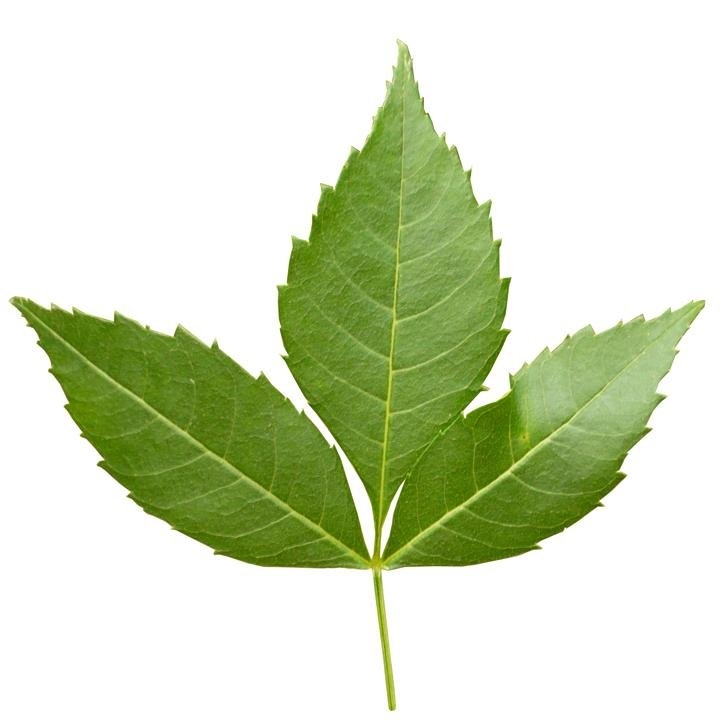Description
Tall tree up to 40 m high; deciduous, of relatively fast growth that might live up to 200 years. The trunk is straight, slim, cylindrical and rugose, with an oval-shaped crown, narrow and elongated. Bark is silver grey and smooth at the beginning, reddish and furrowed in the old trunks. Branches with opposite branchlets flattened at the nodes, with numerous scars from previous leaves. Buds are black, coarse, downy, and dilated. Leaves are large of up to 30 cm, opposite, odd pinnately compound with 7-15 leaflets 5-10 cm long, barely petiolate, lanceolate, toothed and acuminate, and hairless. They are green in the front and whitish and often pubescent beneath, especially upon the mid-rib. Flowers have no calyx nor corolla, have no ornamental use, unisexual or hermaphrodite in purple. They form dense, short and round racemes and are located toward the end of branches of previous year, look like hanging filaments that sprout early, even before the leaves. Fruit is a dry samara (seeds that contain a membranous wing) that favors pollination through the wind. Fruit is oblong lanceolate with an open tip from where racemes hang out. The seed takes less than half the fruit in size. Fruits ripe in autumn and germinate in spring. Some trees are totally male, others are male with some female branches or vice versa. There are cases where some branches are male one year and female the next one. It belongs to the Oleaceae family.
It is indigenous of northern Africa and Iberian Peninsula, moderate weather regions of Europe and Asia with some species found in America. It grows spontaneously in moist woods and slant lands. It prefers fresh, from mild to high humidity levels in deep soils rich in bases with slightly acid pH. It is very resistant to low temperatures. Ash blooms in spring, in March-April. In the Mediterranean area it’s substituted by a similar specie (F. angustifolia Vahl) or small or narrow-leafed ash.
Part used
Leaves (leaflets), occasionally the bark of the Fraxinus excelsior or F. oxyphylla M. Bieb.
Indications
*Leaves
- Rheumatic disorders: arthritis, arthrosis, joint pain, tendinitis and sprains.
- Hyperazotemia, hyperuricemia, gout.
- Genitourinary disorders: cystitis, uretheritis, urethritis, pyelonephritis, oliguria, urinary lithiasis prevention, edemas and every time de diuresis needs to be increased.
- Arterial hypertension.
- Overweight along with water retention.
- Varicose veins, hemorrhoids.
- Flu, common cold.
- Constipation.
- In ancient times it was believed to be an antidote against snakes poison.
*Bark
- Feverish syndromes (flu, common cold).
- Oxyuriasis.
- Hemorrhoids.
- Rheumatic and gouty pain.
- Wounds and skin ulcers.
Bibliography
Berdonces i Serra, J. Ll. (2001) Gran Enciclopedia de las Plantas Medicinales. Tikal. Madrid
Bruneton, J. (2001) Farmacognosia. Fitoquímica. Plantas medicinales. 2ª Edición. Acribia, S.A. Zaragoza
Cañigueral, S., Vila R., Wichtl M. (1998) Plantas medicinales y drogas vegetales para infusión y tisana. OEMF International. Barcelona
Chevallier, A. (1997) Enciclopedia de las Plantas Medicinales. Acento. Madrid
Lastra, J.J., Bachiller L.I. (1997) Plantas medicinales en Asturias y la Cornisa Cantábrica. Trea. Gijón (Asturias)
Vanaclocha B., Cañigueral S. (eds.) (2003) Fitoterapia, Vademécum de Prescripción. Masson. Barcelona
